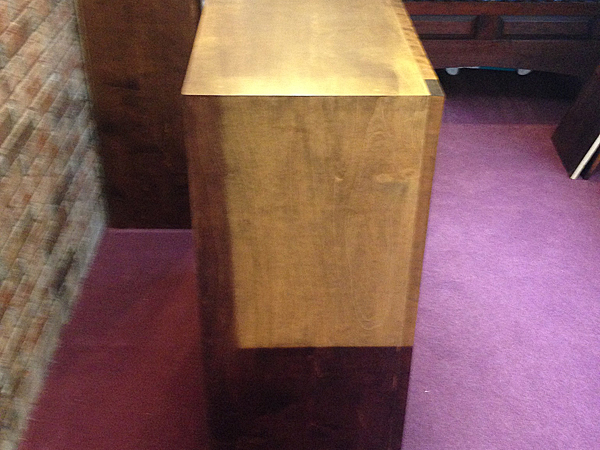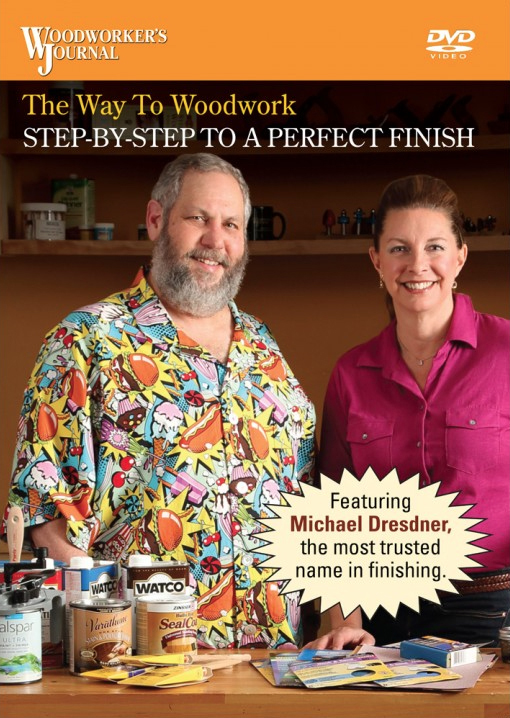
I stained this bookcase with water-soluble aniline dye stain and finished it with polyurethane varnish. It has been located on a sun porch with direct sunlight shining on the end and top of the bookcase. As you can see, the sun has bleached out the color. Is this bleachable characteristic unique to aniline dye, or could this also happen with oil-based stain? Can we only keep this from happening by relocating furniture out of direct sunlight? I plan to strip and refinish the bookcase. – Dick Acker
Tim Inman: Old Sol always wins. Sunshine is incredibly destructive to both finishes and the substrates under them. UV rays will tear up the varnish and the wood structure. So, to answer your question directly, “No,” this bleaching is not unique to aniline dyes. Aniline dyes are usually considered one of the more lightfast materials when it comes to dying wood. Obviously they are not lightFAST, just fade resistant. When you strip the finish, you will probably discover that the wood itself has also been permanently bleached out. Keeping fine furniture away from the direct (and even indirect) rays of sunshine is the only way to really stop this from happening. If that is not a possibility, then I would suggest that instead of using a fugitive stain you might be better to select a rare-earth pigment. Pigments can indeed be lightfast. Asphaltum (tar) is one virtually lightFAST material we can use for wood stains. Diluted out, it can mimic golden oak, and in stronger concentrations it will go down to Mission oak or even walnuts. The umbers and siennas are also usually lightFAST materials. Remember, light is your enemy, not your friend!
Chris Marshall: Dick, here’s another finishing option you might consider for re-staining that bookcase: ordinary latex paint. You can thin any latex paint color with water and use it as a solid color stain. Thin it out enough, and you’ll be able to see the wood grain through the color like a pigment stain. Just think of all the color options! And they won’t fade as quickly as a dye stain will. Michael Dresdner offers this suggestion in our magazine’s DVD, “The Way to Woodwork: Step-by-Step to a Perfect Finish.” It’s a clever alternative that never would have crossed my mind until I watched Michael’s presentation.






